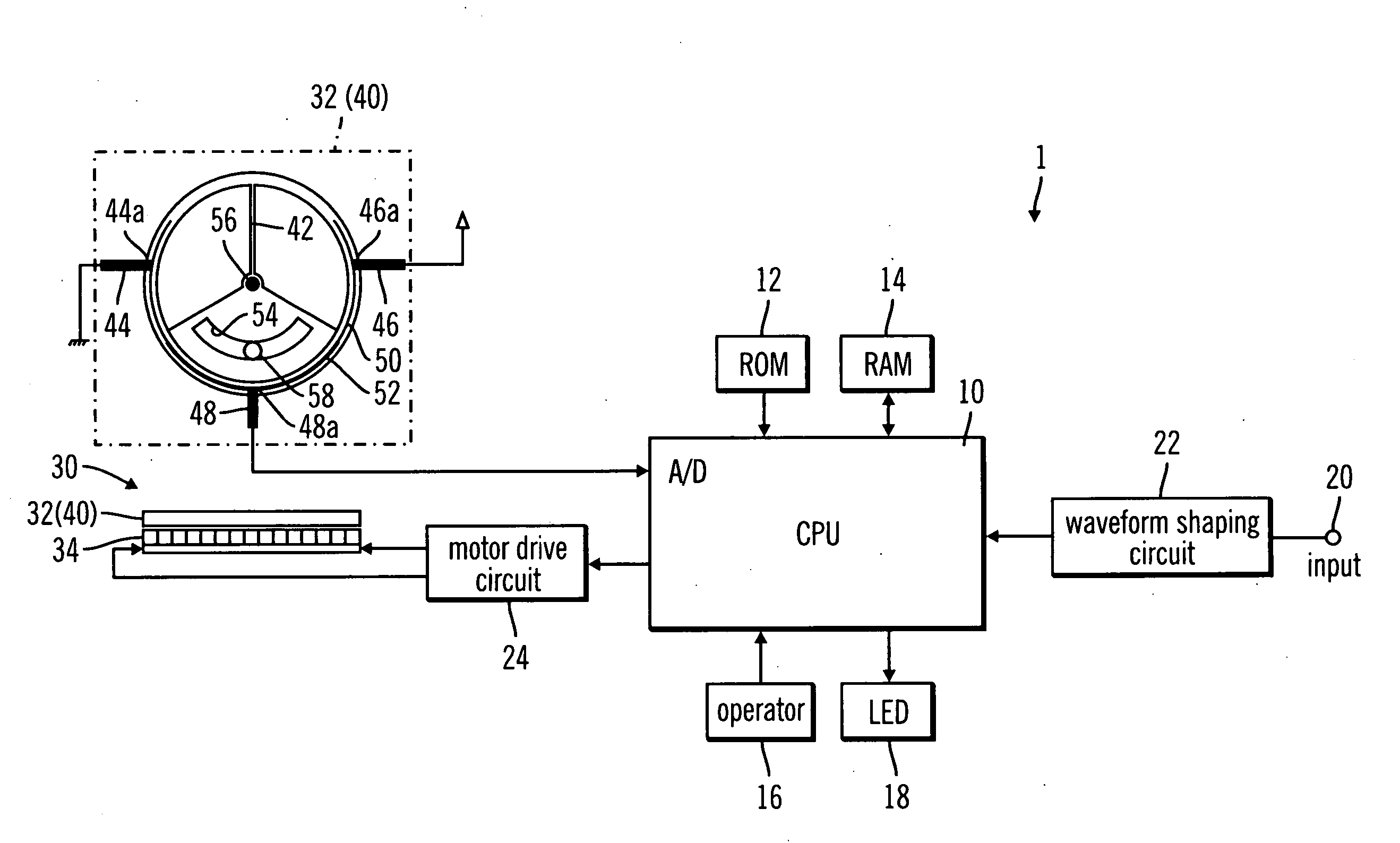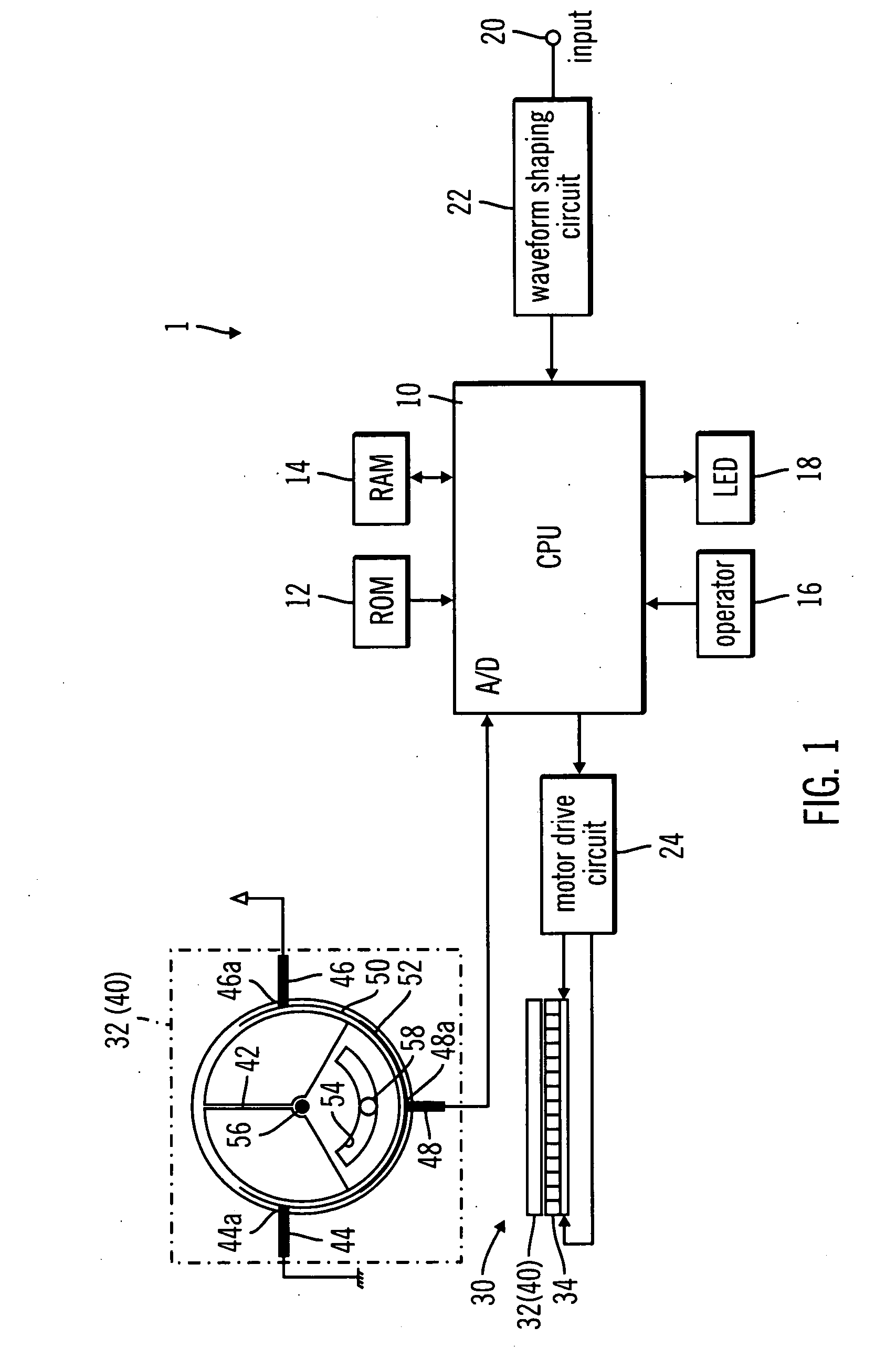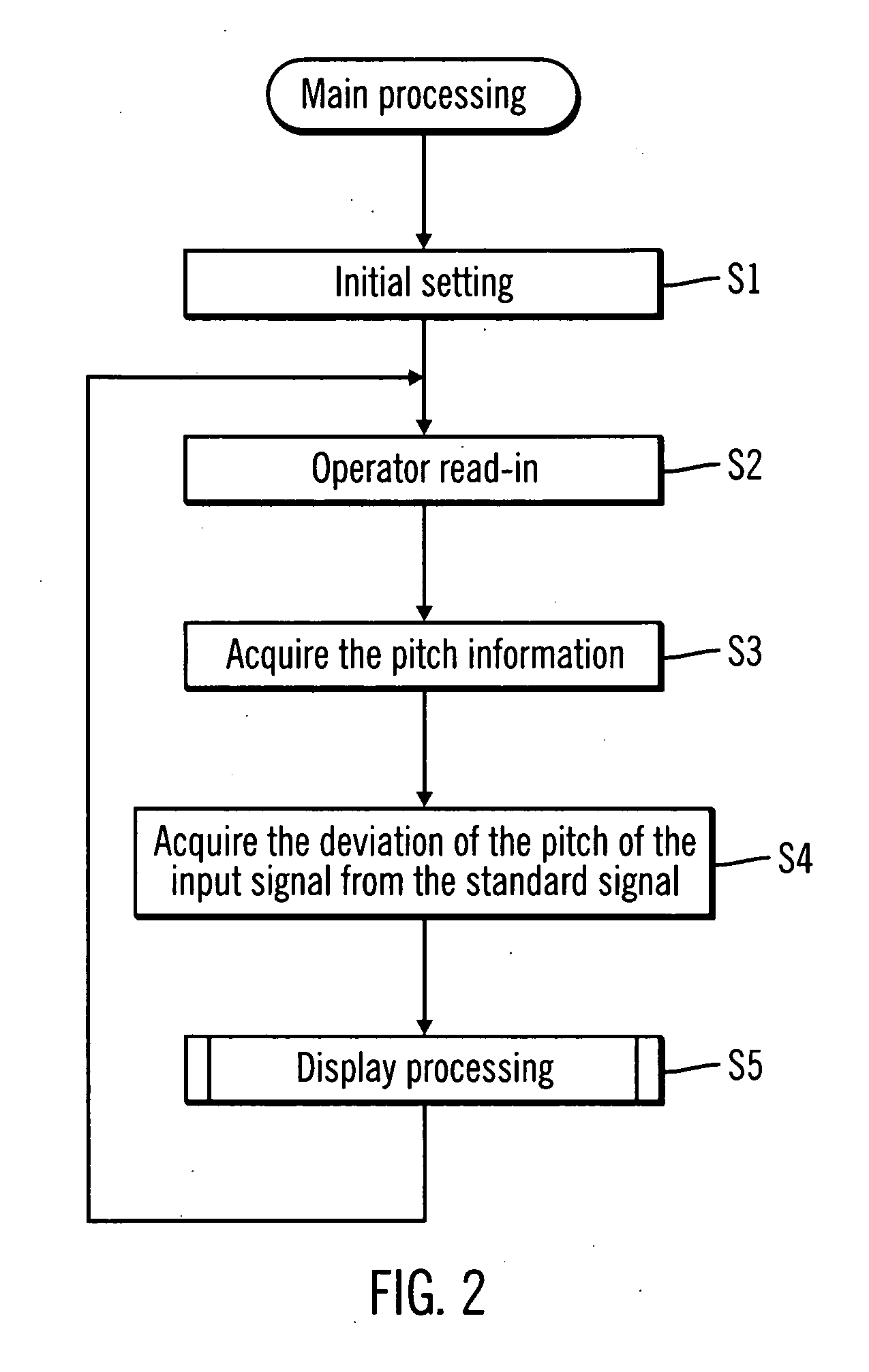Tuning device and method for musical instrument
a technology of tuning device and musical instrument, which is applied in the direction of identification means, instruments, measurement apparatus components, etc., can solve the problems of difficult use of the tuning device in which the meter section has been configured, difficulty in carrying out fine tuning under conditions in which the pitch of the input signal approaches the standard pitch, and difficulty in carrying out fine tuning. , to achieve the effect of reducing power consumption, reducing the occurrence of wiring failures, and improving usability
- Summary
- Abstract
- Description
- Claims
- Application Information
AI Technical Summary
Benefits of technology
Problems solved by technology
Method used
Image
Examples
Embodiment Construction
[0030] An explanation will be given below regarding an example embodiment of the present invention while referring to the attached drawings. FIG. 1 is a block diagram that shows the configuration of the tuning device 1, which is one example embodiment of the present invention. As shown in FIG. 1, the tuning device 1 is furnished primarily with a signal input terminal 20, a waveform shaping circuit 22, which is an analog circuit that amplifies the input guitar signal that has been input from a guitar (not shown in the drawing) through the signal input terminal 20 (hereinafter, referred to simply as the “input signal”) and shapes the waveform into a square wave, a (CPU) 10, a (ROM) 12, a (RAM) 14, operators 16, LEDs 18, an ultrasonic motor 30 that has a meter section 40, and a motor drive circuit 24, which is a circuit that produces the drive signal for driving the ultrasonic motor 30.
[0031] The CPU 10 is a central processing unit that controls the entire tuning device 1 and is furni...
PUM
 Login to View More
Login to View More Abstract
Description
Claims
Application Information
 Login to View More
Login to View More - R&D
- Intellectual Property
- Life Sciences
- Materials
- Tech Scout
- Unparalleled Data Quality
- Higher Quality Content
- 60% Fewer Hallucinations
Browse by: Latest US Patents, China's latest patents, Technical Efficacy Thesaurus, Application Domain, Technology Topic, Popular Technical Reports.
© 2025 PatSnap. All rights reserved.Legal|Privacy policy|Modern Slavery Act Transparency Statement|Sitemap|About US| Contact US: help@patsnap.com



